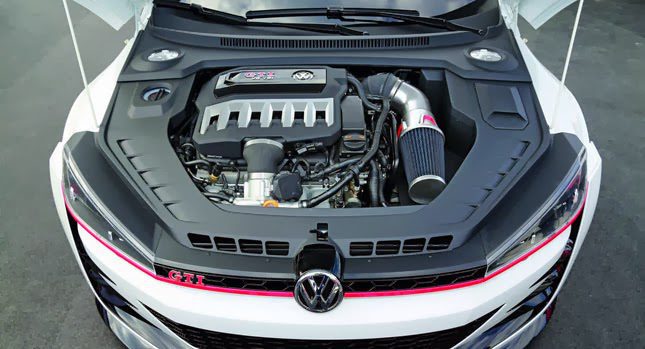How to Choose the Right Opel Corsa Engine for Your Car
How to Choose the Right Opel Corsa Engine for Your Car
Blog Article
Comprehensive Testimonial of a Subcompact Automobile's Powertrain Capabilities
In the world of automobile design, the powertrain of a subcompact automobile stands as an essential nexus where efficiency, development, and efficiency assemble. From the engine's relentless search of ideal efficiency to the transmission's seamless choreography of power circulation, every element plays a crucial duty in defining the total driving experience.
Engine Performance Evaluation
In evaluating the engine efficiency of the subcompact auto, an extensive analysis reveals its effectiveness and power result under different driving problems. The subcompact auto's engine, an important component of its powertrain system, demonstrates commendable efficiency metrics.
Additionally, when based on extensive testing scenarios such as high-speed acceleration or uphill climbs, the engine shows strength and responsiveness. Its power outcome continues to be constant, supplying sufficient velocity when needed. The subcompact automobile's engine is customized to satisfy the needs of city driving, where fast acceleration and nimble maneuverability are crucial.
Additionally, the engine's layout integrates modern technologies that enhance its efficiency qualities. Features like turbocharging or variable valve timing contribute to improved power distribution and torque, improving the overall driving experience. In verdict, the engine performance of the subcompact vehicle underscores its capacity to supply trustworthy and efficient power output throughout numerous driving conditions.
Transmission Efficiency Assessment
Assessing the subcompact cars and truck's transmission efficiency includes analyzing its efficiency in sending power effortlessly across different driving problems. The efficiency of a transmission system is crucial as it directly impacts the overall performance and gas economic situation of the vehicle. In assessing transmission effectiveness, aspects such as equipment ratios, shift timing, and the level of smoothness of equipment modifications are considered. A well-designed transmission system should effectively supply power from the engine to the wheels while lessening power losses.
One typical approach used to evaluate transmission performance is through dynamometer testing, where the power output from the engine is measured at the input and result shafts of the transmission. Discrepancies between input and result power can indicate the degree of performance of the transmission system. Furthermore, real-world driving tests are performed to analyze just how the transmission performs in practical circumstances. By examining these facets, engineers can determine locations for enhancement and optimize the transmission system for much better total efficiency and performance.
Fuel Performance Evaluation
The examination of the subcompact auto's fuel effectiveness entails a detailed evaluation of its intake rates under various driving conditions. Gas efficiency is a critical consider evaluating the overall performance and cost-effectiveness of an automobile. By measuring the quantity of fuel consumed per unit distance took a trip, generally shared as miles per gallon (MPG) or liters per 100 kilometers (L/100 kilometres), the efficiency of the subcompact auto's powertrain can be identified.

Additionally, innovations in technology, such as hybrid systems, regenerative stopping, and automatic start-stop systems, have substantially improved fuel efficiency in modern-day subcompact cars and trucks. Manufacturers remain to innovate and maximize powertrain elements to improve gas effectiveness while meeting performance demands and environmental laws. Assessing a subcompact car's fuel efficiency offers valuable insights for customers seeking sustainable and cost-effective transportation services.
Velocity and Handling Analysis
An indispensable facet of assessing the performance capacities of a subcompact car hinges on analyzing its acceleration and dealing with features. Velocity is crucial as it determines just how promptly the vehicle can get to desired rates, impacting total driving experience check my site and maneuverability in different web traffic problems. opel corsa engine. Subcompact cars are often preferred for their nimbleness and dexterity, making acceleration this link from standstill and throughout overtaking maneuvers essential elements to take into consideration
When it comes to dealing with, a subcompact vehicle's ability to navigate corners, maintain security at broadband, and supply a responsive steering feel are vital. Tight city roads and winding roadways need exact handling to ensure driver self-confidence and safety. Elements such as suspension tuning, weight circulation, and tire grasp play substantial roles in identifying a subcompact automobile's general handling prowess.

Powertrain Elements Introduction
Upon diving into the complexities of a subcompact vehicle's performance, an extensive evaluation of its powertrain elements is crucial to understand the automobile's mechanical bases. The powertrain of a subcompact car commonly consists of the engine, transmission, driveshaft, differential, and axles. Recognizing how these elements function with each other is important in evaluating a subcompact automobile's overall performance, efficiency, and driving dynamics.
Conclusion
Finally, the subcompact auto's powertrain abilities have been extensively examined in terms of engine performance, transmission effectiveness, gas handling, velocity, and effectiveness. The comprehensive review highlights the value of each part collaborating seamlessly to supply ideal efficiency. In general, the powertrain components of the subcompact automobile have been discovered to be healthy and reliable, making it a trusted choice for chauffeurs looking for a compact and fuel-efficient vehicle.
In the world of automotive engineering, the powertrain of a subcompact auto stands as an essential nexus where performance, innovation, and performance converge.In examining the engine performance of the subcompact automobile, a thorough evaluation discloses its efficiency and power outcome under numerous driving conditions.Evaluating the subcompact auto's transmission effectiveness involves evaluating its performance in sending power flawlessly across numerous driving conditions. Recognizing exactly how these parts function together is crucial in assessing a subcompact car's general performance, performance, and helpful hints driving dynamics.In final thought, the subcompact car's powertrain capacities have actually been thoroughly examined in terms of engine efficiency, transmission effectiveness, gas performance, velocity, and handling.
Report this page